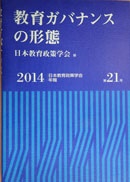Volume 24
Displaying 1-27 of 27 articles from this issue
- |<
- <
- 1
- >
- >|
-
2017Volume 24 Pages 3-
Published: 2017
Released on J-STAGE: August 27, 2018
Download PDF (85K) -
2017Volume 24 Pages 8-9
Published: 2017
Released on J-STAGE: August 27, 2018
Download PDF (105K) -
2017Volume 24 Pages 10-23
Published: 2017
Released on J-STAGE: August 27, 2018
Download PDF (410K) -
2017Volume 24 Pages 24-38
Published: 2017
Released on J-STAGE: August 27, 2018
Download PDF (353K) -
2017Volume 24 Pages 40-46
Published: 2017
Released on J-STAGE: August 27, 2018
Download PDF (213K) -
2017Volume 24 Pages 47-55
Published: 2017
Released on J-STAGE: August 27, 2018
Download PDF (325K) -
2017Volume 24 Pages 56-65
Published: 2017
Released on J-STAGE: August 27, 2018
Download PDF (292K) -
2017Volume 24 Pages 66-74
Published: 2017
Released on J-STAGE: August 27, 2018
Download PDF (384K) -
2017Volume 24 Pages 75-78
Published: 2017
Released on J-STAGE: August 27, 2018
Download PDF (203K) -
2017Volume 24 Pages 80-89
Published: 2017
Released on J-STAGE: August 27, 2018
Download PDF (359K) -
2017Volume 24 Pages 90-99
Published: 2017
Released on J-STAGE: August 27, 2018
Download PDF (2400K) -
2017Volume 24 Pages 100-102
Published: 2017
Released on J-STAGE: August 27, 2018
Download PDF (152K) -
2017Volume 24 Pages 103-107
Published: 2017
Released on J-STAGE: August 27, 2018
Download PDF (204K) -
2017Volume 24 Pages 110-123
Published: 2017
Released on J-STAGE: August 27, 2018
Download PDF (378K) -
2017Volume 24 Pages 124-137
Published: 2017
Released on J-STAGE: August 27, 2018
Download PDF (335K) -
2017Volume 24 Pages 138-152
Published: 2017
Released on J-STAGE: August 27, 2018
Download PDF (389K) -
2017Volume 24 Pages 154-161
Published: 2017
Released on J-STAGE: August 27, 2018
Download PDF (302K) -
2017Volume 24 Pages 162-170
Published: 2017
Released on J-STAGE: August 27, 2018
Download PDF (310K) -
2017Volume 24 Pages 171-177
Published: 2017
Released on J-STAGE: August 27, 2018
Download PDF (248K) -
2017Volume 24 Pages 178-183
Published: 2017
Released on J-STAGE: August 27, 2018
Download PDF (250K) -
2017Volume 24 Pages 186-189
Published: 2017
Released on J-STAGE: August 27, 2018
Download PDF (417K) -
2017Volume 24 Pages 190-193
Published: 2017
Released on J-STAGE: August 27, 2018
Download PDF (414K) -
2017Volume 24 Pages 194-197
Published: 2017
Released on J-STAGE: August 27, 2018
Download PDF (408K) -
2017Volume 24 Pages 198-201
Published: 2017
Released on J-STAGE: August 27, 2018
Download PDF (412K) -
2017Volume 24 Pages 202-204
Published: 2017
Released on J-STAGE: August 27, 2018
Download PDF (403K) -
2017Volume 24 Pages 204-206
Published: 2017
Released on J-STAGE: August 27, 2018
Download PDF (398K) -
2017Volume 24 Pages 208-215
Published: 2017
Released on J-STAGE: August 27, 2018
Download PDF (84K)
- |<
- <
- 1
- >
- >|
